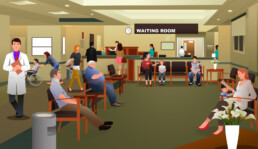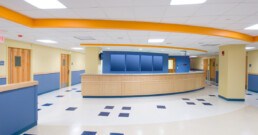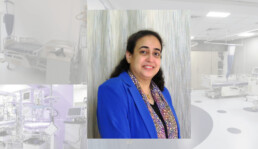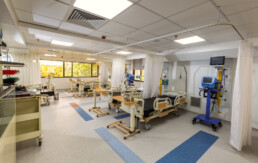Human-Centred Design for Radiology and Imaging Centres
In healthcare, the focus is shifting towards patient-centred approaches, diagnostic departments like radiology are no exception! Human-centred design (HCD) is a pivotal strategy using a hospital and healthcare facility design framework that involves the human perspective at every step of planning and development. This means designing facilities that cater to clinical needs and prioritise patient comfort, safety, and overall experience.
In this blog, we delve into the application of human-centred design in the bustling, technology-rich environment of radiology departments. Whether part of a larger hospital or a standalone centre, we’ll uncover how strategic healthcare architectural and design practices can create spaces that are not only efficient but also empathetic to patient and staff needs, ensuring seamless and effective service delivery. Let’s dive in!
Balancing Functionality and Comfort in Radiology Centre Design
Human-centred design (HCD) is crucial in healthcare because it places the needs and experiences of patients at the forefront. This approach leads to functional and emotionally supportive environments, reducing anxiety and enhancing patient satisfaction. In radiology and imaging centres, where procedures can be intimidating, HCD can transform the experience into something more positive and less daunting. From an architectural or interior design perspective, understanding the unique needs and challenges of radiology and imaging centre users involves a multifaceted approach.
The journey begins with comprehensive user research. This involves understanding the needs, fears, and expectations of patients and the functional requirements of healthcare professionals. Surveys, interviews, and observational studies in existing centres can provide invaluable insights into what works and needs improvement.
This sets the tone for efficient healthcare facility planning and design, ensuring that functional requirements for conducting sophisticated medical procedures are met while catering to patients’ psychological and physical comfort and the efficiency and well-being of healthcare staff.
Kshititi Nagarkar, Shree Designs.
An exciting example of using human-centred design was when industrial designers Doug Dietz and Erik Kemper employed empathy and design thinking to address the fear pediatric patients often experience with MRI scans. They developed an “adventure series” that transformed intimidating MRI scanners into elements of a child-friendly adventure. For instance, the “pirate adventure” featured visual motifs like shipwrecks and sandcastles. This innovative approach reframed the scanning process for children, turning a potentially scary experience into an engaging and imaginative adventure.
While every project may not be able to cater to each patient population, here are some overall considerations to keep in mind when designing a radiology centre.
7 Essential Elements of Human-Centered Design in Radiology and Imaging Centres
1. Patient Comfort and Anxiety Alleviation
- Designing for Relaxation: Spaces should evoke a sense of calm to alleviate anxiety. This can be achieved through natural light, calming colour schemes, and artwork. These amenities can make the wait before procedures less intimidating.
- Privacy Considerations: Private changing areas and secure storage for personal belongings are essential.
- Soundproofing: Given the noise of imaging equipment, soundproofing techniques can create a more comfortable environment. Acoustics play a large role in patient and staff comfort. Find out more in our recent blog, linked here: The Role Of Acoustics In Healthcare Facility Design
- Biophilic Design Elements: Incorporating elements of nature into the design to promote healing and well-being has been shown to affect patient outcomes positively.
To find out more about how patient-centric design elements can be incorporated in clinics and waiting areas, check out our blog linked here: Patient-centric Clinic Designs
2. Accessibility and Mobility
- Wheelchair Accessibility: Wide corridors and doorways and appropriate turning radii are necessary for wheelchair access.
- Navigable Layouts: Clear signage and intuitive layouts help guide patients through the centre easily, which is important for those with mobility or cognitive impairments.
Wayfinding is an essential aspect of healthcare facility design. Find out more in our detailed blog, linked here: Navigational Design In Hospitals
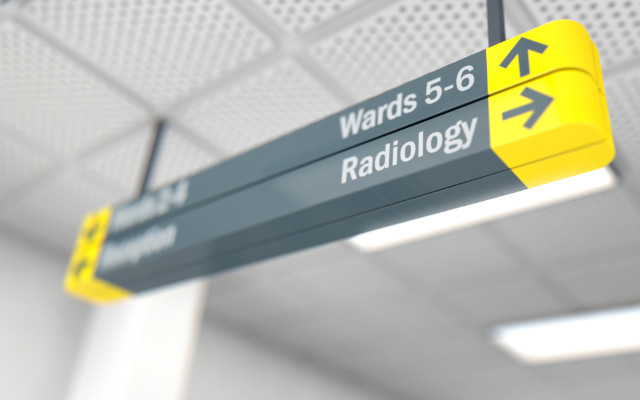
3. Safety and Infection Control
- Non-Porous Materials: Surfaces in patient and equipment areas should be easy to clean and disinfect.
- Air Quality and Ventilation: Advanced HVAC systems to ensure proper air circulation and filtration, reducing the risk of airborne infections.
4. Efficiency for Healthcare Professionals
- Ergonomic Workstations: Utilizing design thinking in healthcare, workstations and control rooms are crafted to reduce physical strain and heighten patient monitoring capabilities. These ergonomic designs are central to providing a conducive environment for healthcare staff.
Learn how ergonomic design can streamline productivity in healthcare setups through our informative blog: Ergonomics In Healthcare Design
- Strategic Equipment Placement: In line with evidence-based design healthcare principles, equipment is strategically placed to optimise staff and patient movement, streamlining workflows and increasing operational efficiency.
5. Patient Diversity and Inclusivity
- Cultural Sensitivity: Embracing human-centred design in healthcare, the spaces are tailored for cultural inclusivity with language considerations, reflecting the diverse backgrounds of the patient population.
- Diverse Patient Needs: The design accommodates a wide range of patients, embodying principles of health centre design by creating environments suitable for children, the elderly, and those with specific medical conditions.
Healthcare organisations are shifting toward patient-centric design that gains not just patient satisfaction – but also patient DELIGHT! Our latest blog takes you through a few patient-friendly design trends that work for many healthcare facilities- 5 Patient-Friendly Designs For Your Healthcare Facility
6. Patient Flow and Logistics
- Smooth Patient Journey: Ensuring a logical flow from entrance to exit, a key element in health care centre architecture, reduces patient confusion and stress. This aspect of medical design and construction is vital in optimising patient experience.
- Separate Zones: Differentiating public, semi-public, and private zones, an integral part of design in health, streamlines movement and maintains privacy. Efficient wayfinding and multilingual signage cater to a diverse patient population, embodying the essence of inclusive health centre design.
7. Space for Integrating Technology
- In medical design and construction, integrating digital health records, telemedicine capabilities, and AI-assisted diagnosis tools is pivotal. Central to sustainable hospital design, these advancements can streamline operations and significantly improve diagnostic accuracy.
- Incorporating these technologies in healthcare facility planning and design should augment, rather than detract from, the human element of care. This approach reflects the core values of human-centred design in healthcare.
- Recognising the rapidly evolving nature of technology in healthcare centre architecture, it’s essential to maintain a modular and adaptable design. Such flexibility, a key tenet of design thinking in healthcare, ensures that spaces can be easily upgraded to accommodate new equipment or software, aligning with future hospital design trends. This foresight in health centre design caters to current needs and seamlessly adapts to future technological advancements, making it a sustainable and forward-thinking approach.
Wrapping Up
Human-Centred Design in radiology and imaging centers is more than a trend; it’s necessary. As we move forward, these principles can guide the creation of environments that honour the human experience in healthcare, ensuring that these spaces are functional but also comforting and inclusive.
Shree Designs, with its focus on healthcare architecture and design, stands at the forefront of this transformative approach, crafting spaces that genuinely resonate with the needs of those they serve.
Case study:
An interesting project showcased our efforts to create a patient-first environment for a prominent diagnostics centre: Gokul Scan & Diagnostic Centre, Mulund, Mumbai
This project successfully combined a waiting area, consultation room, ultrasound and X-ray rooms, and utility spaces. Designed with patient psychology in mind, it features fresh air, pleasant colour schemes, and a color blocking interior with pastel shades for a homely, soothing atmosphere. This turnkey project marks the start of our new division and highlights our commitment to creating simplistic, modern diagnostic facilities focused on patient comfort.
Related Posts
Patient-centric Clinic Designs
Visiting a doctor’s office is hardly ever a fun experience for patients. While waiting for a…
Creativity Cures! How to Boost Mental Wellbeing through Design
Imagine an era of “supportive design” where we cultivate the physical and social environments in…
Cost-effective and patient-centric hospital design
Biltrax Media in its Feb 2022 issue, published an interview with our principal architect Kshititi…
Patient-Centred Care and Community Healthcare
Patient-centred care focuses on individual patients’ healthcare needs and desired health related…
